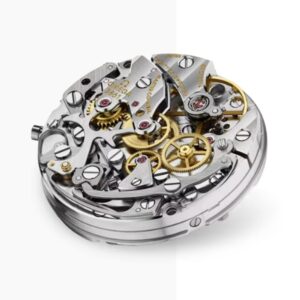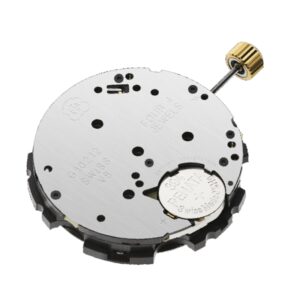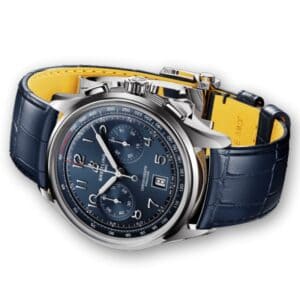Automatic vs Battery-Powered Watches
Here's a quick summary of the key differences between Automatic and Battery-powered watches:
| Feature | Automatic Watches | Quartz Watches |
|---|---|---|
| Power Source | Motion of your wrist (no battery) | Battery-powered |
| Accuracy | Loses/gains ~10 seconds/day | Deviates only a few seconds/month |
| Maintenance | Servicing every 3–5 years | Battery change every 2–3 years |
| Durability | More delicate (sensitive to shock/magnetism) | Highly durable (good for active use) |
| Price Range | Generally more expensive | More affordable options available |
Struggling to choose? Here's a table to help you decide which type of watch is right for you:
| Your Situation/Preference | Recommended Watch | Why It Fits |
|---|---|---|
| You want a low-maintenance watch | Quartz | Requires no winding, only a battery replacement every few years |
| You appreciate fine craftsmanship | Automatic | Hand-assembled with intricate mechanical movements |
| You have a smaller budget | Quartz | Affordable models deliver excellent performance |
| You want a watch that retains long-term value | Automatic | Often increases in value and can become a family heirloom |
| You lead an active lifestyle | Quartz | Lightweight, durable, and resistant to impacts |
| You love traditional, classic designs | Automatic | Timeless, elegant styles with historical significance |
| You prefer a highly accurate watch | Quartz | Loses only a few seconds per month, far more precise than automatics |
| You enjoy the idea of owning a mechanical marvel | Automatic | Features intricate internal mechanisms powered by wrist motion |
| You need a watch for formal occasions | Automatic | Often seen as a symbol of prestige and elegance |
Now we'll break down each type of watch in more detail, and give a more detailed comparison:
Mechanical Marvel: The Artistry of Automatic Watches

Self-winding models, also known as automatic watches, are powered by the motion of your wrist as you move.
Inside the watch, a rotor spins as you move, tightening the mainspring to store energy. This intricate mechanism allows the device to run without a battery, provided it is worn or occasionally hand-wound.
Owning a self-powered design is akin to owning a living piece of history. Every component, from the gears to the escapement, represents centuries of horological innovation.
High-end brands like Rolex, Patek Philippe, and Audemars Piguet are well known for this type, showcasing exquisite engineering that collectors appreciate deeply, and that maintain their value over time.
Insights into Automatic Watches
- Craftsmanship as Art: These watches often feature a display case back—a sapphire crystal window revealing the mechanics inside. Observing the balance wheel oscillating or the rotor in motion can feel meditative, serving as a reminder of the human ingenuity behind the design. Opt for models with detailed finishing (like Geneva stripes or perlage patterns), as they elevate the device’s character and value.
- Timekeeping Precision: While these are less accurate than battery-operated options (losing or gaining several seconds per day for many models), advancements like chronometer certification (e.g., COSC standards) have improved their reliability. For even greater accuracy, consider designs with innovations like silicon hairsprings, which resist magnetic interference and temperature fluctuations.
- Maintenance Tips:
- Self-winding mechanisms are not set-it-and-forget-it devices. Regular servicing (typically every 3–5 years, sometimes up to 10 years) ensures the lubrication remains effective, and components function optimally.
- Avoid overwinding manually. If your model has a screw-down crown, always secure it carefully to maintain water resistance.
- If you rotate between several options, invest in a watch winder (learn more). This keeps your piece running smoothly while preventing wear on the movement from frequent resets.
- Symbolism and Style: Automatics often resonate with those who value tradition, craftsmanship, and attention to detail. They offer the same emotional appeal as driving a classic car—an experience shaped by the journey rather than pure convenience.
Quartz Watches: The Pinnacle of Precision and Practicality

Battery-powered devices changed timekeeping in the 1970s.
Using an electrically charged quartz crystal, they maintain remarkable accuracy.
Unlike automatics, these models require minimal intervention—apart from periodic battery changes—making them highly practical for day-to-day wear.
While quartz technology was once associated with mass production, modern luxury quartz models from brands like Longines, Breitling, and Grand Seiko bring precision to premium design.
Insights into Quartz Watches
- Unrivaled Precision: These pieces typically deviate by only a few seconds per month, far surpassing the accuracy of mechanical counterparts. For professions or activities where precise timing is critical—think pilots, surgeons, or athletes—quartz offers unmatched reliability.
- Battery and Eco-Friendly Options:
- A standard battery lasts about 2–3 years, but solar-powered designs (like Citizen’s Eco-Drive or Seiko’s Solar) eliminate the need for replacements. These watches harness light energy, creating an environmentally friendly and virtually maintenance-free option.
- Kinetic movements, combining quartz precision with motion-powered energy storage, provide a hybrid option.
- Durability for Active Lifestyles: Battery-operated models tend to be lighter and slimmer, ideal for individuals who prioritize comfort or engage in physical activities. Versions with sapphire crystal and robust cases can withstand impacts, scratches, and water exposure—perfect for outdoor adventures or fitness enthusiasts.
- Affordability Without Compromise: While automatics often command a premium due to their intricate construction, quartz provides a more accessible entry point into high-quality horology. Even within luxury segments, battery-powered options deliver the same attention to detail in design and materials.
Choosing the Right Watch for Your Needs
Selecting between self-winding and battery-powered designs depends on your priorities.
Do you feel drawn to the romance of mechanical engineering, or is the practicality of modern technology more your style?
When to Choose an Automatic Watch
- You appreciate traditional craftsmanship and want a timepiece that tells a story through its engineering.
- Wearing or winding your watch feels like an enjoyable ritual, not an inconvenience.
- You see your watch as an heirloom—something to pass on through generations.
When to Choose a Quartz Watch
- Precision and convenience are top priorities, and you prefer not to worry about regular maintenance.
- You lead an active lifestyle and need a durable, lightweight watch that can keep up.
- A high-quality timepiece within a modest budget aligns with your goals.
Pro Tip: If you’re drawn to both categories, consider starting with a quartz watch for its simplicity and practicality, then expanding into automatics as your collection grows and your appreciation deepens.
More Than Time: Watches as Personal Statements
A watch doesn’t simply serve as a tool; it reflects your personality, values, and aspirations.
Wearing a beautifully crafted automatic watch to a formal event is a subtle nod to tradition and elegance.
Alternatively, a sporty quartz chronograph might accompany you on hikes or boardroom presentations, ready for any situation.
Collecting timepieces isn’t about simply keeping time—it’s about investing in pieces that resonate with your life. Choose wisely, and each piece will become a treasured companion.




